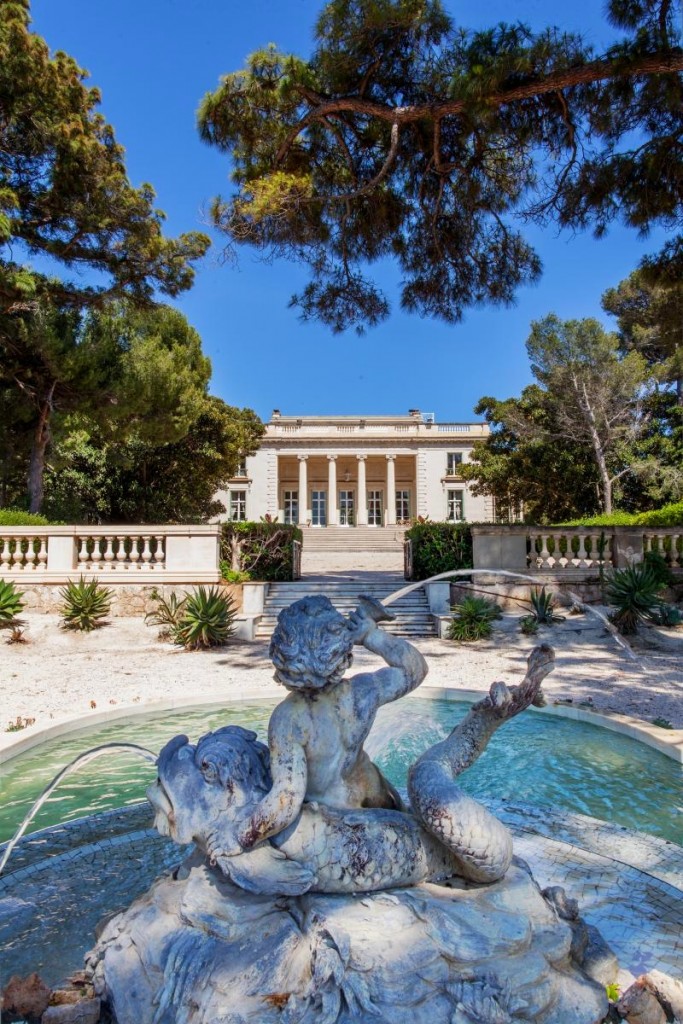Promenade past Belle Époque-era buildings
Following a building boom from the late 1800s to just before the first world war, Nice’s distinctive architecture still stands out today. A series of magnificent, wedding cake-like villas, hotels and apartment blocks line the seafront along the Promenade des Anglais; some of the best remaining examples include Hotel Negresco, Westminster Hotel, Hôtel West End and Hôtel Le Royal. Don’t miss No 139 on the Promenade, the frivolous art nouveau fantasy of Villa Collin-Huovila, formerly designed for a Finnish millionaire.
Museum hop in Cimiez
Nice’s history goes back to Roman times; if you explore the Cimiez district, elevated above the terracotta rooftops of the old town, you’ll find the remains of an arena, amphitheatre and Roman baths from the 1st century AD. Cimiez is also where you’ll find a museum dedicated to the colourful, vivid works of one of France’s finest painters: the Musée Matisse. Henri Matisse himself is buried nearby, in the cemetery of the gothic Monastère de Cimiez. A short stroll away is the Musée National Marc Chagall, showcasing a darker, modernist style a world away from his contemporaries. An unexpected architectural marvel is to be found in Le Piol district, by the Parc Impérial: the ornate, star-sprinkled domes and colourful exteriors of the 1912 St Nicholas Russian Orthodox cathedral are reminiscent of St Basil’s cathedral in Red Square.

Discover Cannes off the beaten tracks
Thanks to its eponymous film festival (established in 1946), Cannes has a timeless, silver screen allure and has long been a magnet for the rich, famous and beautiful. But there’s so much more to discover about this former fishing village. Like Nice, it was a Roman settlement, at what’s now Le Suquet, a charming muddle of medieval narrow streets lined with candy-coloured buildings, not far from the Croisette. It, too, is home to some iconic architecture; La Malmaison on the waterfront – formerly the seaside pavilion of Le Grand Hôtel and now a centre for contemporary art that holds two major exhibitions a year – is currently exhibiting the works of avant garde sculptor Niki de Saint Phalle. Further along the Croisette looms the intricate, Belle Époque confection that is the InterContinental Carlton Cannes, where Alfred Hitchcock’s To Catch A Thief was filmed in 1955. Just a short stroll away is the Espace Miramar, an exhibition space devoted to photography and the visual arts. Back towards the Vieux Port, up the Suquet hill, you’ll find the Musée de la Castre, inside the ruins of a solid stone medieval castle that now houses an eclectic art collection bequeathed by a local resident.
Walk in Picasso’s footsteps
Antibes, a smart seaside resort, attracts the wealthy and the fashionable, but it has also drawn artists – one, in particular. Pablo Picasso came here in 1946, and stayed in the Château Grimaldi, a 14th century stronghold of the House of Grimaldi, perched by the sea in the old town. On the second floor, Picasso turned a light-flooded space into his studio and produced several pieces during his stay, 23 of which he donated to the town after he left – including The Goat and La Joie de Vivre. Subsequently, in 1966, it became the Musée Picasso, and today the collection comprises 245 artworks, including paintings, ceramics and etchings.
Visit Antibes’ museum of postcards and learn how absinthe is made
If your museum taste is, err, towards the quirky side, you could check out Antibes old town’s Musée de la Carte Postale, which exhibits thousands of postcards from all over the world, and from all eras. The Absinthe Museum is just behind the Picasso one; deep in the basement, among old Roman foundations, you’ll learn how this potent spirit, known as the green fairy, is made, and, of course, sample it. A stroll northwards around the harbour leads to Fort Carré, a 16th century, star-shaped military fort perched on the headland of Saint-Roch. And a trip to Antibes’ blustery Cap is essential; on this striking, forested peninsula you’ll find the elegant Villa Eilenroc, an estate set in 11 acres of pretty parkland and tropical gardens.

See the other stars of Monaco
Forever associated with one of the most beautiful film stars of her generation, Grace Kelly, the family she married into – the aforementioned House of Grimaldi – continues to rule over the small principality affectionately known as “the rock”. While the royal family has its own handsome, white palace, its architecture almost pales into insignificance next to some of Monaco’s other buildings. Even if you’re not into marine science, you can’t miss the Oceanographic museum, a simply jaw-dropping, baroque revival structure that seems to rise right out of the cliff. Inside is an aquarium housing more than 350 species of fish; the museum was the first to keep and reproduce coral in captivity.
Roll the dice, or head to the opera
Around the sweep of the harbour, at the Place du Casino, is one of Monaco’s most famous buildings – the late 19th century cream edifice of the Casino de Monte-Carlo. Facing it is the unbelievably ornate Opera Garnier, which has seen performers of the calibre of Nellie Melba and Enrico Caruso. Similarly beautiful is the Nouveau Musée National de Monaco, located by the Jardin Exotique; its wedding cake exterior houses a range of contemporary art, with works by the likes of Nan Goldin.
The Cultural Pass includes more than 60 cultural sites and activities on the Côte d’Azur
guardian.co.uk © Guardian News & Media Limited 2010
Published via the Guardian News Feed plugin for WordPress.


